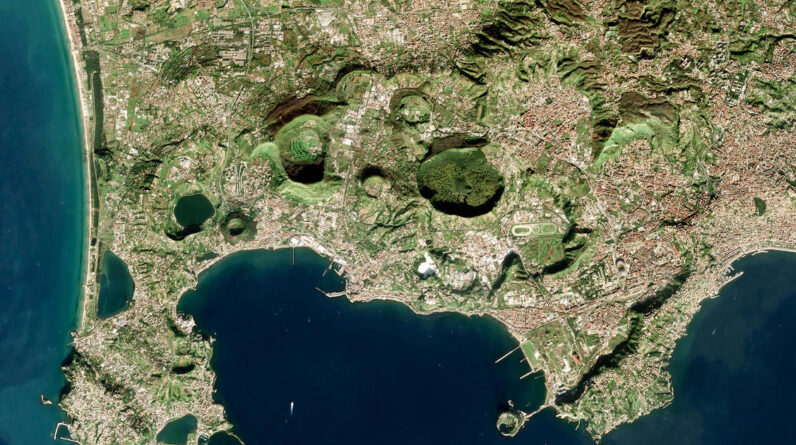
A long-simmering “supervolcano” in southern Italy is nearing a potential eruption, nearly six centuries after it last erupted, European researchers say.
The Campi Flegrei volcano, which is located near the city of Naples, has weakened over time and is more prone to rupture as a result, according to a peer reviewed study carried out by researchers from University College London in England and the National Institute of Geophysics and Volcanology Research in Italy.
The study used a fracture model of the volcano to interpret the patterns of earthquakes and ground uplift. There have been tens of thousands of earthquakes around the volcano, and the city of Pozzuoli, which rests atop the Campi Flegrei, has been raised about 13 feet as a result of them. Earthquakes and uplift have stretched parts of the volcano “almost to breaking point,” according to a press release about the studyand the floor seems to be breaking, rather than bending.
Salvatore Laporta/KONTROLAB/LightRocket via Getty Images
Earthquakes are caused by the movement of fluids below the surface, according to the press release. It’s not clear what these fluids are, but the researchers said they could be molten rock, magma or natural volcanic gas.
Earthquakes have occurred during active periods of the volcano. Although it last erupted in 1538, it has been “restless” for decades, with peaks of unrest in the 1950s, 1970s and 1980s. The researchers said there has been “a slower phase of unrest” in the last 10 years, but 600 earthquakes were recorded in April, which set a new monthly record.
In accordance with LiveScienceCampi Flegrei is often referred to as a “supervolcano”, which can produce eruptions reaching category 8, the highest level of the Explosivity index of the volcano. However, the largest Campi Flegrei eruption was technically classified as a Category 7, which is still considered a very large and disastrous eruption, LiveScience reported.
While Campi Flegrei, meaning “flaming fields,” may be closer to the rupture, there is no guarantee that this will result in an eruption, the study concludes.
“Rupture can open a crack in the crust, but the magma still has to be pushed to the right place for an eruption to occur,” said Professor Christopher Kilburn, who studies earth sciences at the University College of London and was the lead author of the study.
Vincenzo Izzo/LightRocket via Getty Images
Kilburn said this is the first time the model has been applied to a volcano in real time. Since first using the model in 2017, the volcano has behaved as predicted, Kilburn said, so the researchers plan to expand the use of the model to look at other volcanoes that reawakened later of long periods of latency. The goal is to establish more reliable criteria for deciding whether an eruption is likely and to establish a model that can be applied to multiple volcanoes.
“The study is the first of its kind to predict the rupture of an active volcano. It marks a step change in our goal of improving eruption forecasts around the world,” Kilburn said.
/ Getty Images
Trending news
Kerry Breen
[ad_2]
Source link









